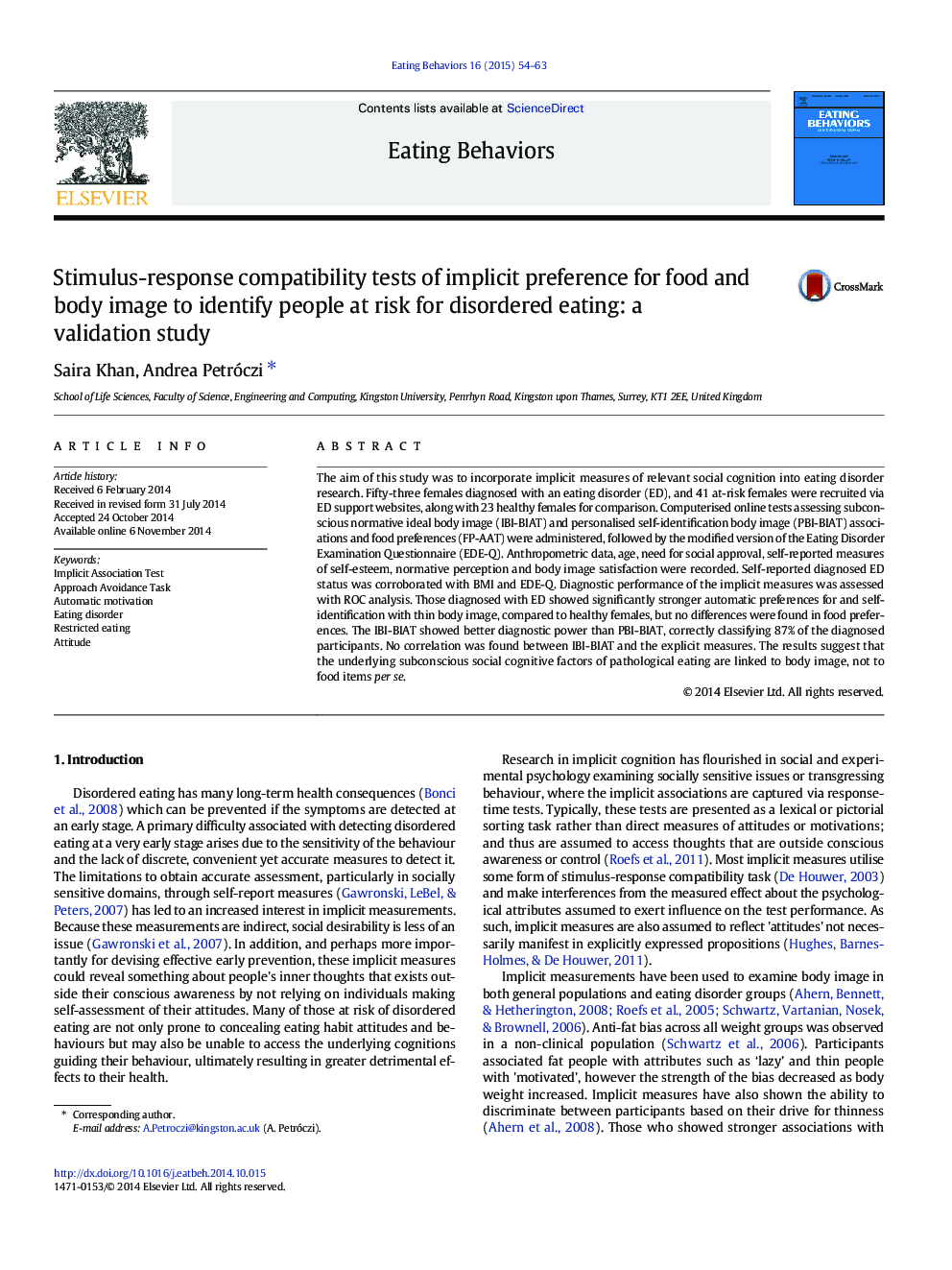| کد مقاله | کد نشریه | سال انتشار | مقاله انگلیسی | نسخه تمام متن |
|---|---|---|---|---|
| 906538 | 1472887 | 2015 | 10 صفحه PDF | دانلود رایگان |
• Tested the discriminating power of implicit body image and food preference measures.
• Compared samples of clinically diagnosed eating disorder (ED) with healthy.
• Ideal implicit body image showed good discriminatory power for ED.
• ED was independent of automatic motivation for high/low fat food.
• No correlation was found between implicit and explicit body image measures.
The aim of this study was to incorporate implicit measures of relevant social cognition into eating disorder research. Fifty-three females diagnosed with an eating disorder (ED), and 41 at-risk females were recruited via ED support websites, along with 23 healthy females for comparison. Computerised online tests assessing subconscious normative ideal body image (IBI-BIAT) and personalised self-identification body image (PBI-BIAT) associations and food preferences (FP-AAT) were administered, followed by the modified version of the Eating Disorder Examination Questionnaire (EDE-Q). Anthropometric data, age, need for social approval, self-reported measures of self-esteem, normative perception and body image satisfaction were recorded. Self-reported diagnosed ED status was corroborated with BMI and EDE-Q. Diagnostic performance of the implicit measures was assessed with ROC analysis. Those diagnosed with ED showed significantly stronger automatic preferences for and self-identification with thin body image, compared to healthy females, but no differences were found in food preferences. The IBI-BIAT showed better diagnostic power than PBI-BIAT, correctly classifying 87% of the diagnosed participants. No correlation was found between IBI-BIAT and the explicit measures. The results suggest that the underlying subconscious social cognitive factors of pathological eating are linked to body image, not to food items per se.
Journal: Eating Behaviors - Volume 16, January 2015, Pages 54–63
